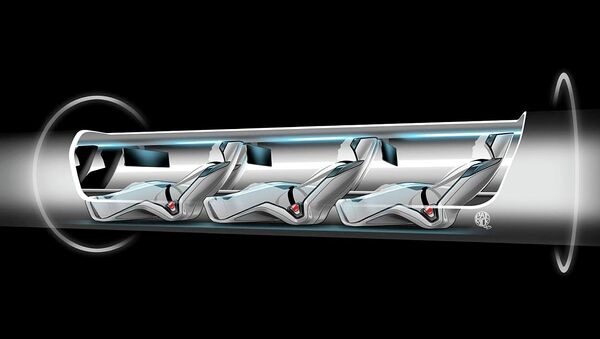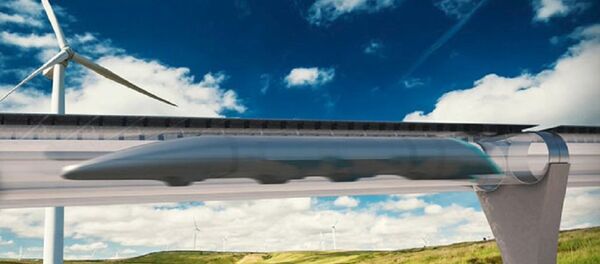Hyperloop technology, also called hypertube, involves a pod moving through a vacuum-sealed pressurized tube. The capsule does not contend with friction (as it lacks wheels or a track) or air resistance (as the tube has no air inside of it) allowing it to reach speeds of well over 600 miles an hour.
The state-sponsored Korea Railroad Research Institute (KRRI) has teamed up with engineering researchers out of Hanyang University in an attempt to make hyperloops viable "over the next three years."
"We hope to create an ultra-fast train, which will travel inside a state-of-the-art low-pressure tube at lightning speeds, in the not-too-distant future," said a KRRI official. "To that end, we will cooperate with associated institutes as well as Hanyang University."
Hyperloop was first proposed by US technology icon Elon Musk in 2012. He described hypertube transport as being very fast, immune to weather, crash-free, power-efficient, and able to operate 24 hours a day.
Musk's more visible ventures, SpaceX and Tesla Motors, have both worked on conceptual hyperloops, and they have been joined by start-ups such as Hyperloop One and Hyperloop Transportation Technologies (HTT). In addition to the United States; Canada, Great Britain, Australia, and China have also experimented with the futuristic ground transportation.
"Many countries… are competing to take the lead in this futuristic technology and we will also try to pre-empt our global rivals," the KRRI official said. "The government has focused on interdisciplinary research and this will be the biggest effort we are working on to develop a representative future technology."
The fastest ground transport in the world are magnetic levitation (maglev) trains, which, as their name suggests, levitate above track using magnetic force. A maglev train can move at speeds above 300 mph, about half as fast as a hyperloop.
Germany, Japan and China are the only countries in the world with commercially available maglev rail lines. Maglevs are also not affected by friction, but are burdened by air resistance, which prevents them from reaching the same speed as hyperloop transport.
Excluding the many tiny islands off the coast, South Korea"s length is approximately 333 kilometers, and a hyperloop transport capsule, moving at maximum speed, could travel from the southernmost city of Suncheon to the northernmost city of Chuncheon in a mere twenty minutes.
There are risks to using hyperloop technology, the largest being that if a hole was to form in the external tube, depressurization would likely be fatal for anyone inside.
The year 2017 is shaping up to bring exciting developments in the transport technology. HTT announced Wednesday that they had reached an "exploratory agreement" with the Czech city of Brno to develop a hyperloop rail between Brno and Prague. This joins previous agreements HTT has made with Slovakia and the UAE. HTT has approached India regarding a similar project to connect the cities of Chennai and Bangalore, although that project has not been approved.
Hyperloop One, meanwhile, has announced their newest high-profile hire: Brent Callinicos, the financial mastermind behind the meteoric rise of Uber. Hyperloop technology will cost billions to test and develop, but that level of cash was raised by Callinicos as Uber's CFO.
SpaceX announced a Hyperloop Pod Competition for late January, to encourage engineering students to develop viable hyperloop technology.




